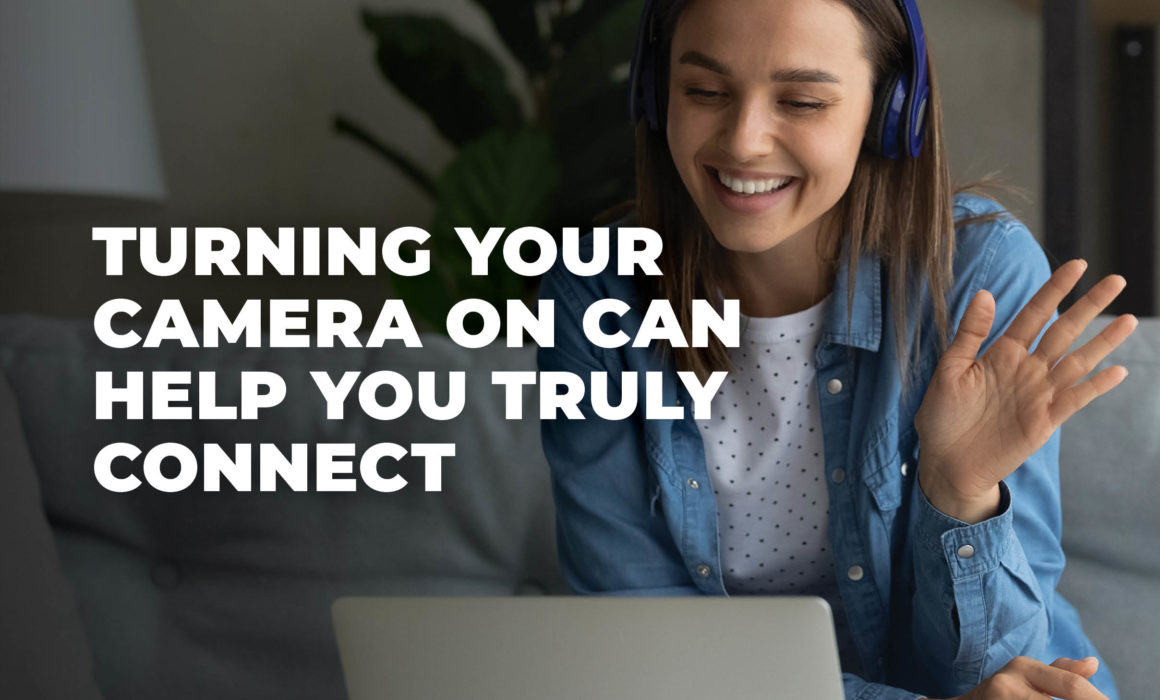Turning Your Camera On Can Help You Truly Connect
Working from home has quickly become the new normal for many office workers. Studies predict that many businesses will continue that trend long-term, with some businesses moving to remote working permanently. And at the center of it all is video conferencing.
In our line of work, we prioritize building healthy relationships between people – typically our clients and their stakeholders. As we’ve ventured into this virtual working environment – which relies heavily on video meetings – many of our clients and even our own staff struggle with questions like: “Am I expected to turn my video camera on? Is it poor etiquette if I don’t? Does it really make a difference?”
The short answer is yes.
In the last 10 years, there has been a 400% increase in the number of employees who work from home at least once a week, and statistics show that remote work will continue to increase by 77% through 2022. Being remote can present some challenges, one of them being a lack of human connection. That’s because being in the same room with your clients or colleagues brings a different energy – one that is hard to match in a virtual scenario.
The truth is, we are all still figuring this out. And it’s important to consider that not everyone is working with the same set of circumstances. From poor bandwidth and technology challenges to working out of bedrooms to managing dogs and children – it can be very stressful to anticipate and manage all the possible distractions. And while we may love watching the “work at home” blooper videos, none of us want to have to explain that we’re not a “cat” in a professional setting.
But what we do know from experience is that seeing each other face-to-face is an important way to connect. And turning on your camera – even if it’s just at the beginning of a meeting or when you are speaking and presenting – can make everyone feel more confident and united.
We recently worked on a campaign for one of our corporate clients, encouraging employees to turn on their cameras for virtual meetings. Throughout the process, we learned that many of our clients and colleagues feel uncomfortable in front of the camera. Here are the most common issues that were expressed and some tips to work through them:
“A phone call is just as effective as a video call.”
Maybe … in some cases. But body language and facial expressions help us better understand how the information we are sharing (or hearing) is being received. Video conferencing has proven to increase comprehension and reduce miscommunications. Using video can help bring consensus and clarity, eliminating side conversations and follow up meetings. And who doesn’t love fewer meetings?
“I hate how I look on camera.”
We get it! But other people might not. And statistics show that being able to see a person’s facial features and expressions improves and builds relational equity. Being seen also eliminates the sense of feeling “distant”. Try spending some time playing around with the position and location of your camera. Finding the right angle can help you look your best and feel more confident during your video calls.
“I feel intimated by technology. And I feel like I need to stage my home if I’m going to have to use my camera.”
We know the pressure is real. But, with a little prep and proactive communication, you can make this work.
- Practice using the features in your video conferencing tools so you become familiar with them.
- Find a location where you feel comfortable and relaxed.
- If you do have ongoing technical issues, or you are working in an environment with animals, children or other possible distractions, just communicate that upfront and let others know you may need to turn your camera off at some point during the meeting.
- Using visual aids is also a great way to break up your “face time.” Not only do they generate interest and keep your audience’s attention, but they also heighten concentration levels and understanding of the information being shared.
- Remember to give yourself grace. Everyone else will, too. Chances are you’re not the only one feeling a little intimidated by this new way of working.
At the end of the day, you need to do what’s right for you. But there is a lot of value that can come from connecting through video. While the way we conduct business has forever changed, the importance of making personal connections has become more important than ever. Although connecting virtually can’t replace the value of physical gatherings, video can help us make authentic and meaningful connections. So, next time you have a meeting, consider turning your camera on!
Connect with us to learn more about how you can stay truly connected with your employees and stakeholders.


